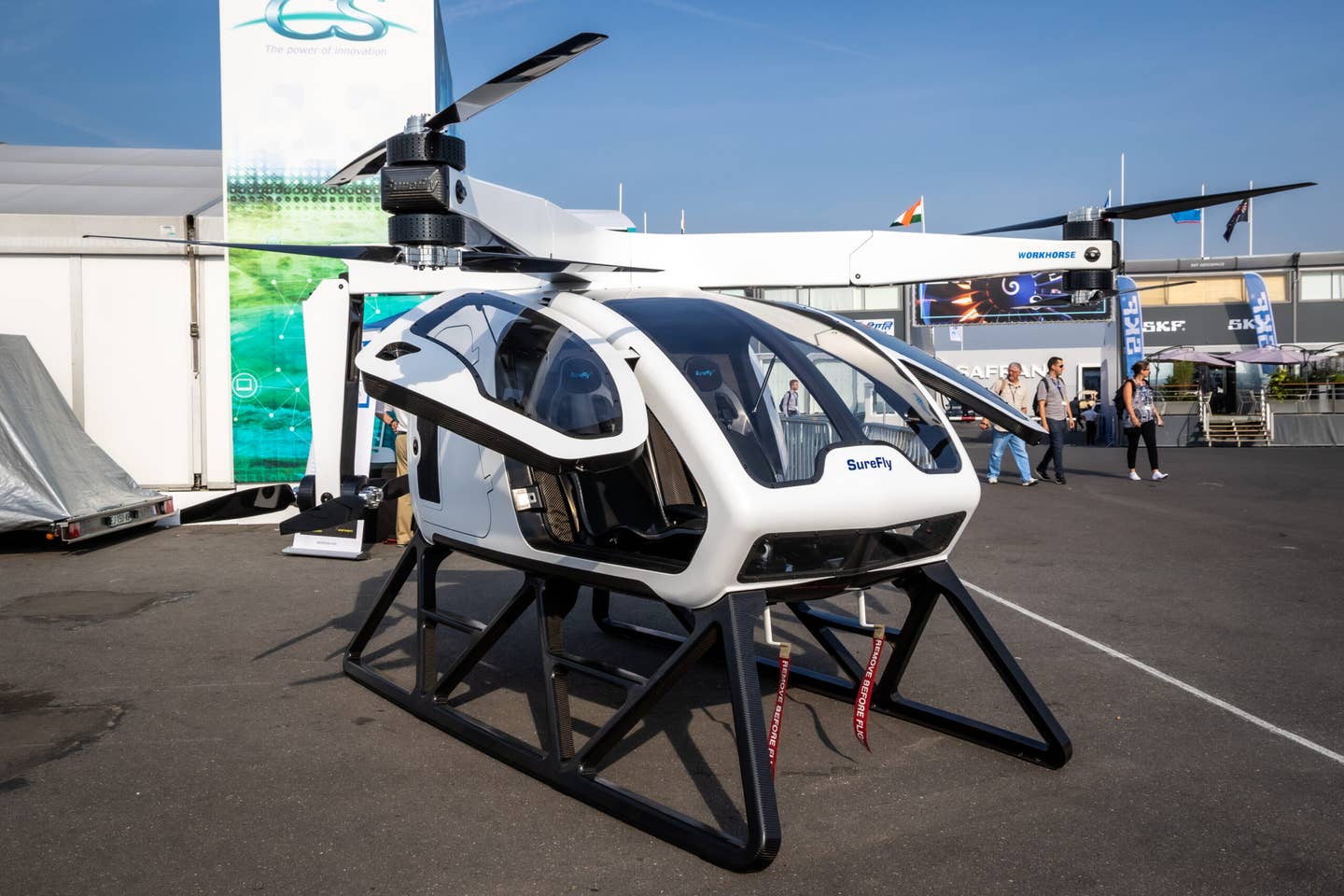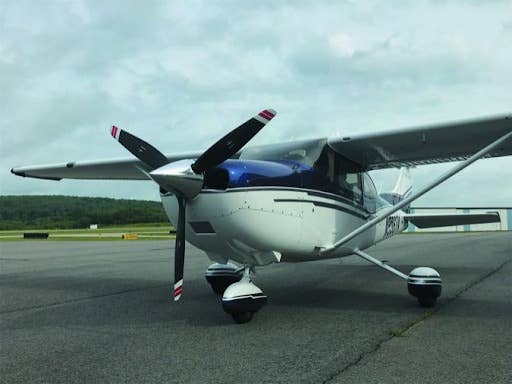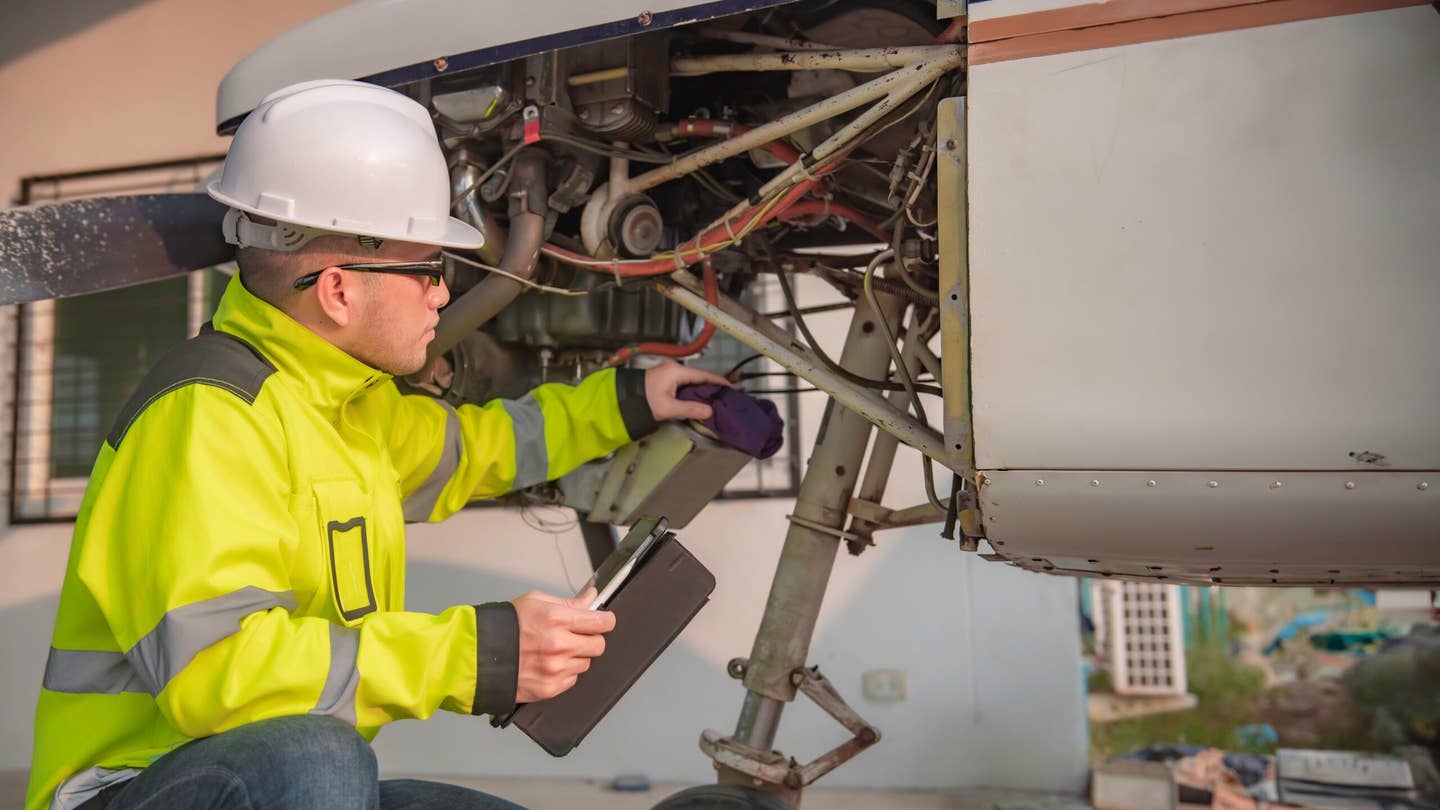
Still in early stages, eVTOL technology is anticipated to begin commercial services around the late 2020s or early 2030s.
[Credit: Shutterstock]
BROUGHT TO YOU BY FLYING FINANCE
Electric vertical takeoff and landing (eVTOL) aircraft have the potential to transform urban and regional transportation by offering faster, eco-friendly alternatives to traditional ground transport.
Typically powered by batteries, eVTOLs operate essentially like helicopters, although some models operate like fixed-wing aircraft during flight and only engage the rotors for vertical takeoff and landing procedures.
Still in early stages, eVTOL technology is anticipated to begin commercial services around the late 2020s or early 2030s.
Several notable eVTOL manufacturers, including AIR, are currently in the process of obtaining Part 91 FAA certification for personal use, which will allow owners to take off and land from any private property with permission.
While this new technology promises to open aviation to a wider market, financing the eVTOL industry and making it commercially viable presents unique challenges. To succeed, the industry will require new financing structures and strategies to support development, infrastructure, and market adoption.
For eVTOL companies to become profitable, they will need substantial early investment in aircraft manufacturing, vertiport infrastructure, and operational systems like air traffic management. For example, companies such as Eve Air Mobility have raised funds to support these initiatives, including loans and equity financing to develop aircraft prototypes and infrastructure solutions.
Such capital helps them build capabilities such as urban air traffic management, critical for the safe operation of eVTOL fleets in dense urban areas, which can be complex and costly to scale up without financial backing from government and private investors.
The high costs associated with eVTOL aircraft design, certification, and infrastructure mean debt financing might not be viable for traditional consumers of aircraft. Bain reports that the number of operational eVTOL aircraft may not exceed 15,000 until the mid-2030s—which would mean a slow but steady adoption curve.
This gradual growth poses risks for lenders, as revenue projections remain uncertain. Financing strategies are likely to rely on equity investment, government grants, and public-private partnerships rather than conventional loans.
As the industry matures, innovative financing models will be needed to offset operational costs and attract a broader customer base. These could include leasing programs for operators or “pay-per-flight” structures that allow operators to scale their fleets without the burden of owning every aircraft.
In addition, governments may provide financial incentives to promote sustainable transportation, which would benefit eVTOL companies working to reduce emissions and improve urban mobility.
For investors, the allure of eVTOL lies in the potential for high returns in an emerging market. However, this requires balancing risks with the significant capital needed for a long-term payoff.
While eVTOLs promise a revolutionary shift in transportation, their commercial success hinges on developing new financing frameworks. With a blend of equity investment, public support, and innovative operational models, eVTOLs may well redefine mobility, though not without navigating a complex financial landscape first.
Whether or not you’re looking to finance an eVTOL or a conventional ICE aircraft, reach out to FLYING Finance today for the best rates. Our team of experts will help you structure your purchase and get you into the perfect aircraft.

Sign-up for newsletters & special offers!
Get the latest FLYING stories & special offers delivered directly to your inbox



![[PILOT AND SNELLEN CHART PIC]](https://www.flyingmag.com/uploads/2022/11/2022-FlyingMag.com-Native-Advertising-Main-Image--scaled.jpeg?auto=webp&auto=webp&optimize=high&quality=70&width=1440)


